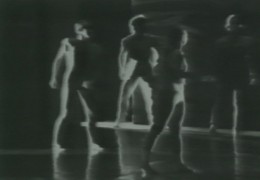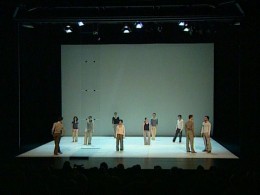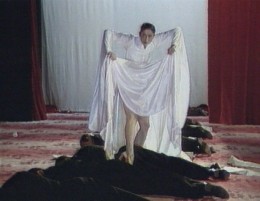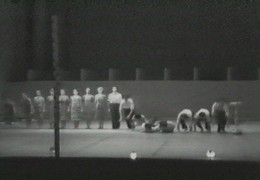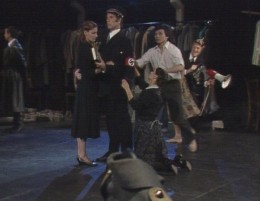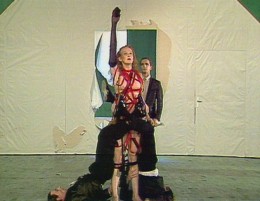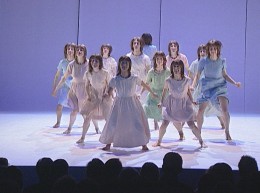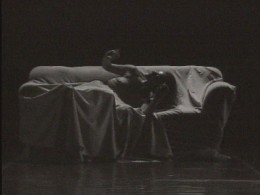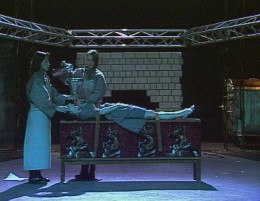| Pictures at an Exhibition | Gerhard Bohner | 1981 |
Stage works Video clips | Bremer Tanztheater | Bremen | D | 1981 |
Choreography: Gerhard Bohner [clip length: 1'12 min]
“Pictures at an Exhibition” by Gerhard Bohner presents a collage of different musical versions of Modest Mussorgysky’s “Pictures at an Exhibition”. “Dancers in everyday clothes instead of ballet costumes, in street shoes, slippers, flippers or bare feet instead of slippers and pointe shoes, which are not completely banished because of that. Cardboard boxes, plates, umbrellas, life-size stick puppets or briefcases become co-actors on stage. The rooms – living spaces for stories, fates, characters and everyday occurrences. In “Pictures at an Exhibition” the room becomes a museum hall or a ballet hall, depending on how it is used – at the same time serving as a mirror for the psychic interior of a character haunted by nightmares.” (from the book: TanzTheaterGeschichte by Susanne Schlicher)
Dance Encyclopaedia Links
People
Bohner, Gerhard
Institutions
Bremen Dance Theatre
Topics
German Dance Theatre

